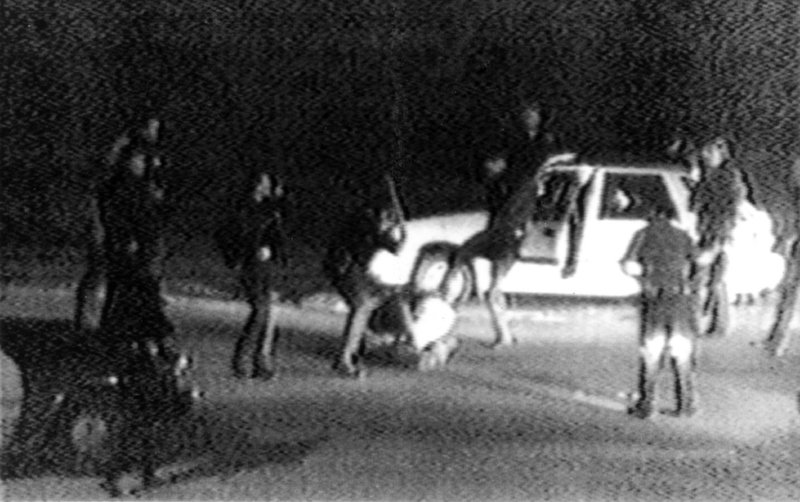LOS ANGELES — Rodney King, who died Sunday after a troubled life, never meant to change the Los Angeles Police Department — but that’s what he ended up doing.
The mention of King’s name will always recall painful video images of his 1991 beating and the following year’s Los Angeles riots, which were sparked by the acquittals of the officers and resulted in vast destruction and dozens of deaths.
But the King affair also transformed basic practices of policing, not just in Los Angeles but across the country, author Lou Cannon said.
“The LAPD is famous and notorious and other departments key off of what they do,” said Cannon, who researched every aspect of the King case for his book, “Official Negligence: How Rodney King and the Riots Changed Los Angeles and the LAPD.”
“The King beating and trial set in motion overdue reforms in the LAPD and that had a ripple effect on law enforcement throughout the country,” he said.
After the 1992 riots and the ouster of police chief Darryl Gates, a commission headed by Warren Christopher — who became later President Bill Clinton’s secretary of state — recommended a number of reforms.
Among them was an end to the “lifetime chief.” Starting with William Parker in 1950, Los Angeles police chiefs had virtual lifetime tenure granted by civic reformers responding to civic corruption in the 1930s and ’40s.
But as the city’s demographics changed, the largely white police department — almost 60 percent white at the time of the King beating — was seen as the equivalent of an occupying army that couldn’t be controlled by the city’s elected officials.
Later in the decade, the department’s Rampart scandal resulted in a huge probe into allegations of corruption among anti-gang officers. That ushered in eight years of federal oversight of the LAPD, after the U.S. Department of Justice alleged a long pattern of abuses. Many of the reforms proposed by the Christopher commission were mandated by the federal consent decree.
Under police Chief William Bratton in the 2000s, the department focused on community policing, hired more minority officers and worked to resolve tensions between officers and minority communities who continued to complain about racial profiling and excessive use of force.
“It became more perilous to pull someone over for driving while black,” Cannon said.
Further, King has become a national symbol of civil rights and for the anti-police brutality and anti-racial-profiling movement, the Rev. Al Sharpton said.
“It was his beating that made America focus on the presence of profiling and police misconduct,” he said.
The city’s current police chief, Charlie Beck, agreed that King’s beating served as a catalyst for reform.
“What happened on that cool March night over two decades ago forever changed me and the organization I love,” he said in a statement. “His legacy should not be the struggles and troubles of his personal life but the immensely positive change his existence wrought on this city and its police department.”
Attorney Harland Braun, who represented Theodore Briseno, one of the police officers charged with King’s beating in a federal trial, said the incident might never have become so important if it hadn’t been for the video shot by George Holliday, a neighborhood resident trying out his new video camera.
“In those days, you might have claimed excessive force but there would have been no way to prove it,” he said. “Now, you see case after case with videos. People watch their conduct because everyone has a cellphone and can take a video. But it was unusual then.”
King was found dead in his backyard pool early Sunday morning. Police found no alcohol or drug paraphernalia near the pool and said foul play wasn’t suspected. An autopsy was expected to determine the cause of death within two days.
The real tragedy of Rodney King was that he never got the help he needed, Cannon said. King clearly had neurological problems and addiction issues, and he had learning difficulties as a child which were never addressed.
“He wasn’t a bad person. He just didn’t know how to behave,” Cannon said.
Send questions/comments to the editors.



